Where are the colours! They are everywhere.
Whether we are looking at fall colours from a distance or close-up, fall’s palette is truly magical, a blend of blue mountains and waters, summer and winter greens, gentle reds, and fading browns.
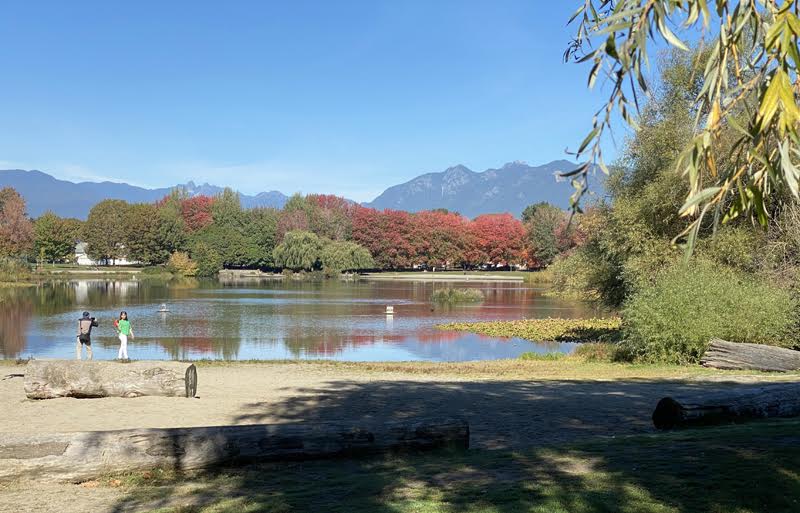
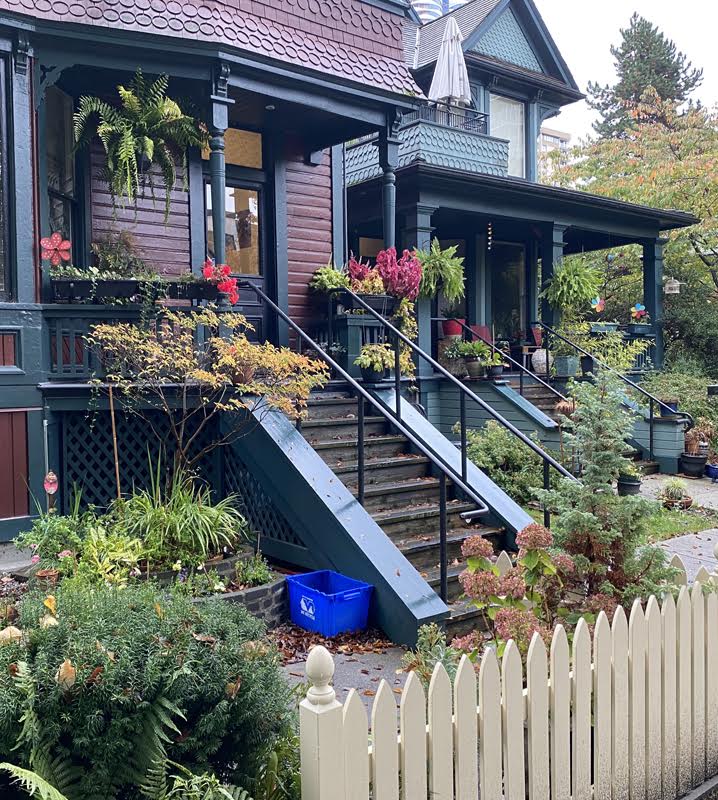
Red sumac leaflets hang down like rows of identical pennants. They are stunning against the ultramarine sky. These leaflets were once green, spreading their leaves wide. But now they are close to falling.
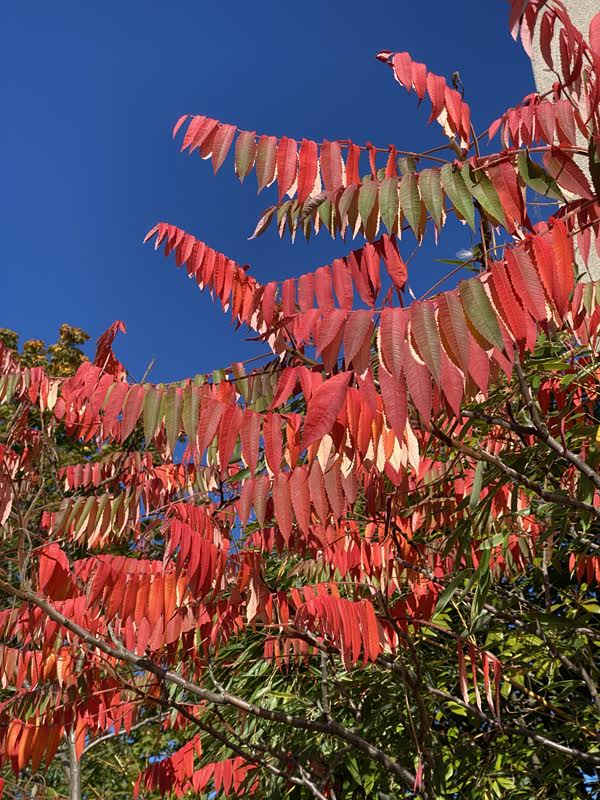
Honeylocust’s compound leaves are turning from green to yellow; yellow leaflets are constantly falling.
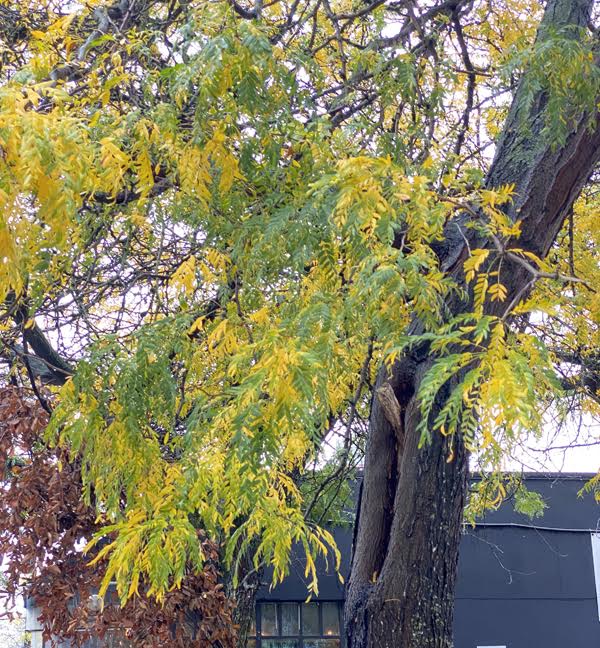
The ground below a liquidambar tree is starry with magenta red, orange, yellow, and brown palmate leaves.
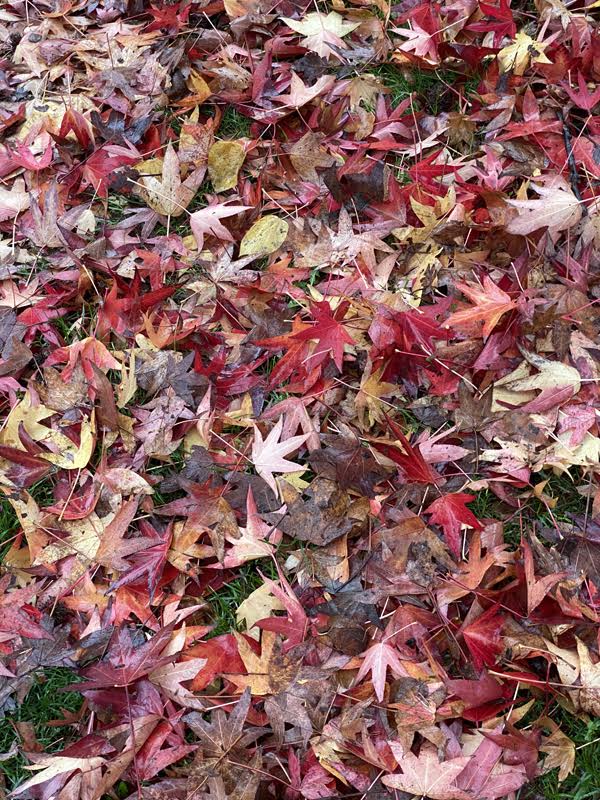
When a tree loses its leaves, the soil that is created below—with the help of the bacteria and fungi in the existing soil—is best suited to that tree. Rhododendron leaves create acidic soil that suits rhododendrons. Liquidambar leaves create alkaline soil. Sumac leaflets create acidic soils.
Love the leaves that fall from your plants and leave them where they fall or tidy them in with the soil around the plants’ stems. If the leaves are diseased, destroy them. And if you have too many leaves to leave them on the ground and create more soil, then composting them is the next best option.
Grasses, like this Pampas grass, are now coming into their own, their swaying and nodding seed heads looking soft and charming.
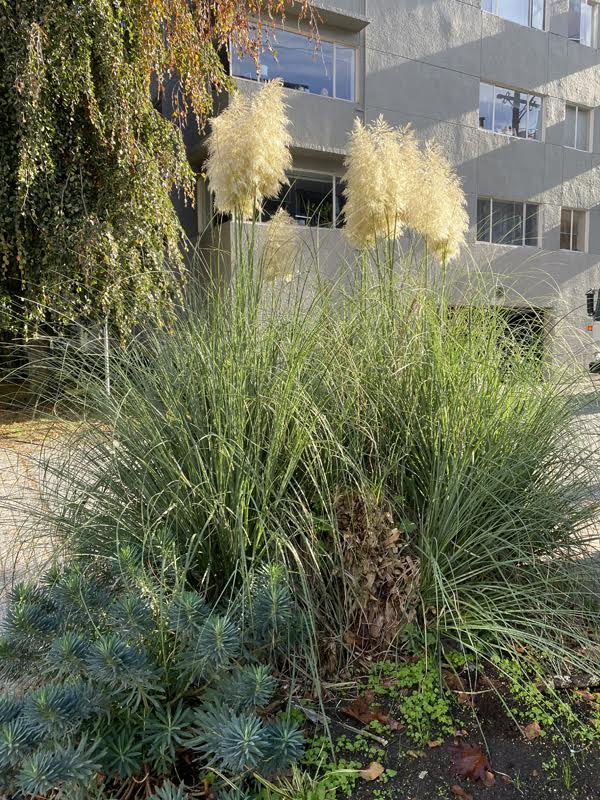
The flower on this marigold is eye catching with its water-shiny red petals and yellow stamens. Still producing buds and content in the cool weather, this is a herbaceous perennial that will flower again next year.
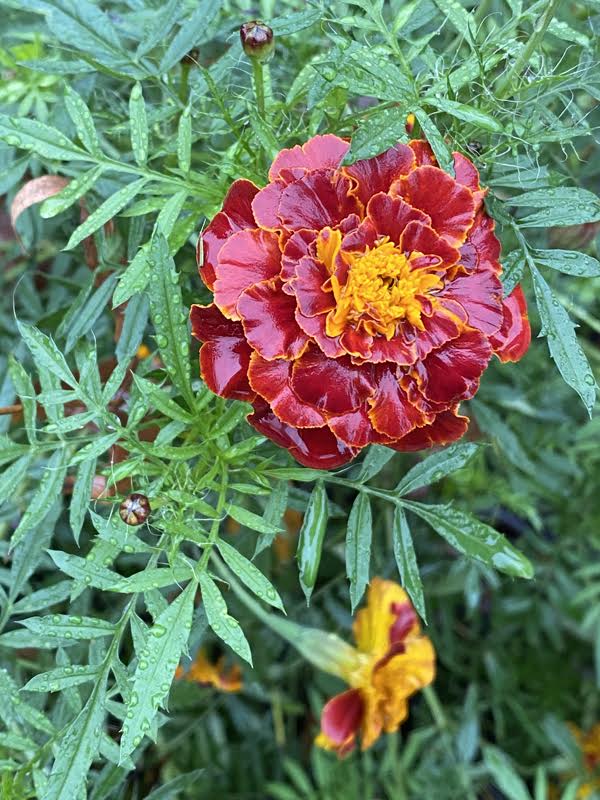
Just as eye catching are the many hanging ruby-coloured blossoms of this plant, loves-lies- bleeding, Amaranthus caudatus. The plant’s seeds are described as pseudocereals, and are great additions to a cooked cereal.
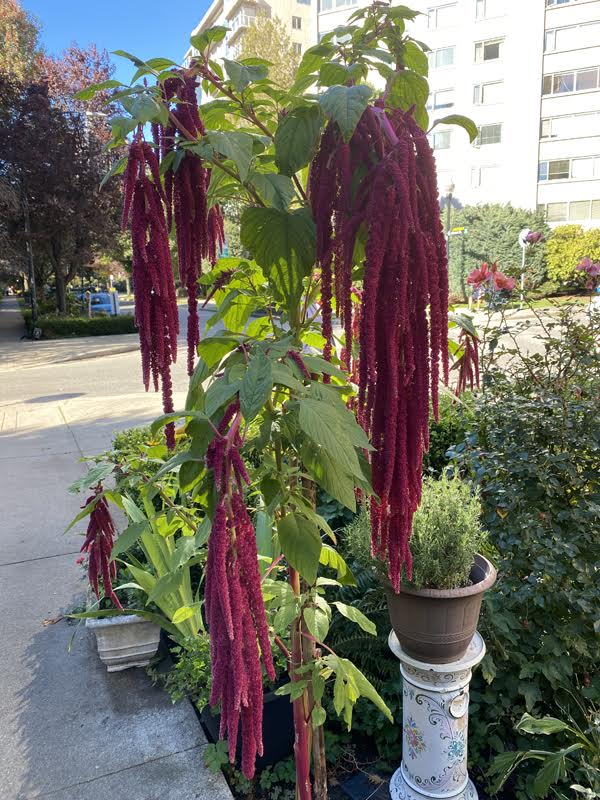
A bumblebee is finding nectar in the pale pink flowers of an Abelia grandiflora, commonly known as abelia.
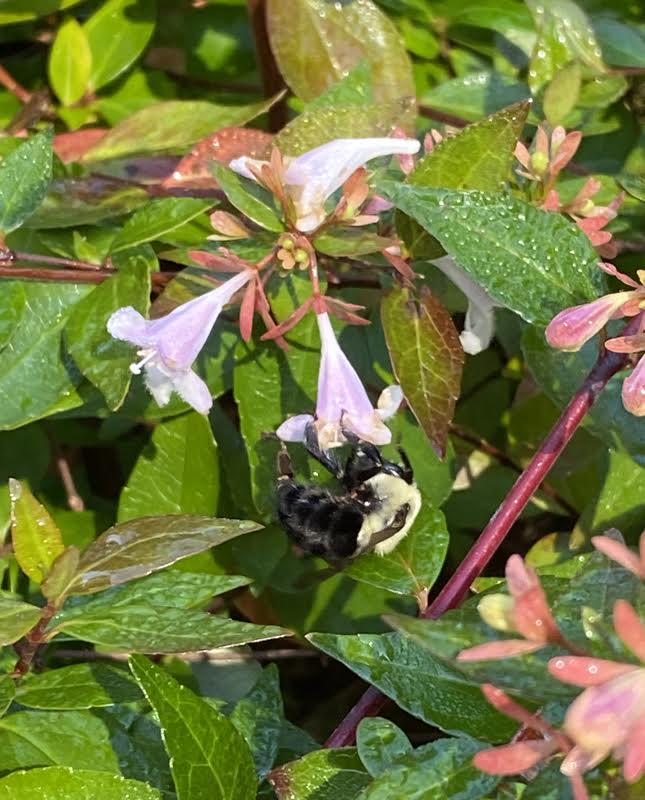
These last three plants have been in bloom for a while, and are still in bloom, whereas blooming for the first time now in October is a paperplant, Fatsia japonica. Native to Japan, this shrub is prized for its beautiful 8- or 9-lobed leaves.
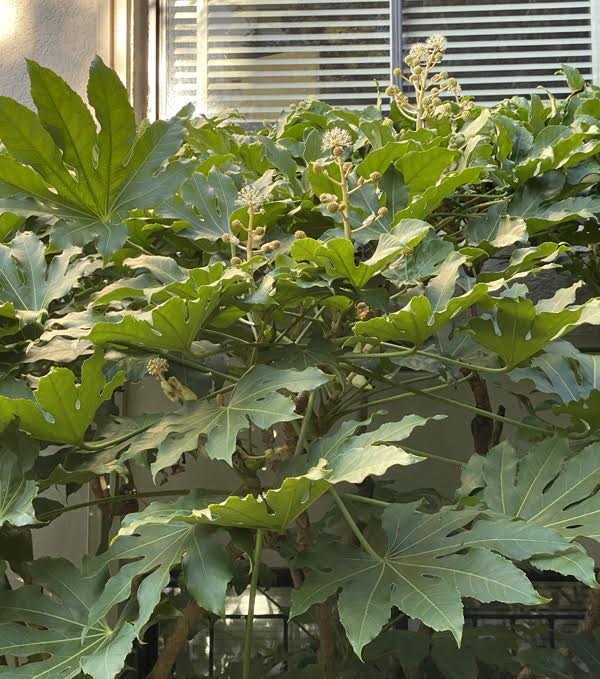
It makes a wonderful show of leaves and white flowers in fall and at the beginning of the following year, the corymbs of black fruit stand out clearly against the green leaves.
There are blue berries on this Oregon grape, Berberis aquifolium (also known scientifically as Mahonia aquifolium). Notice the compound leaves with their pairs of toothed leaflets growing opposite. This is an evergreen shrub, so it will provide interest all year round.
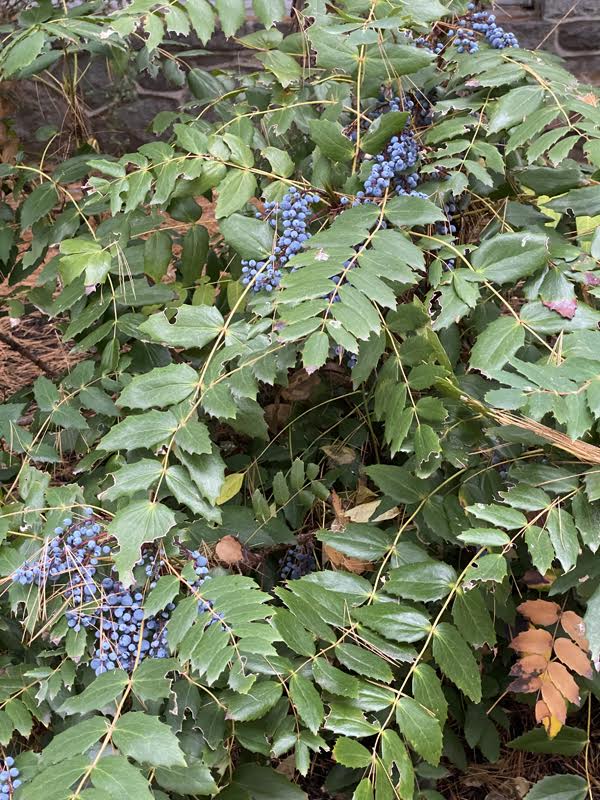
And lastly, here are the red-turning-brown seed pods of a Judas tree, Cercis siliquastrum. Cercis is a Greek word (kerkis) for a weaver’s shuttle, referring to the shape of the seed pods. It is the same genus as the eastern redbud, which is native to eastern Canada around the Great Lakes; siliquastrum is Latin for the seed pods of the plants in Leguminoseae, the pea, bean, and legume family. So, again, the scientific name refers to the pods grown on this tree. The peduncles (stalks) holding the pods to the branches are not that long, but long enough to scatter the seeds well when the pods are mature enough to open. I noticed these red seed pods early in October. The tree had merged into a wild hedge bordering Stanley Park’s Pitch & Putt.
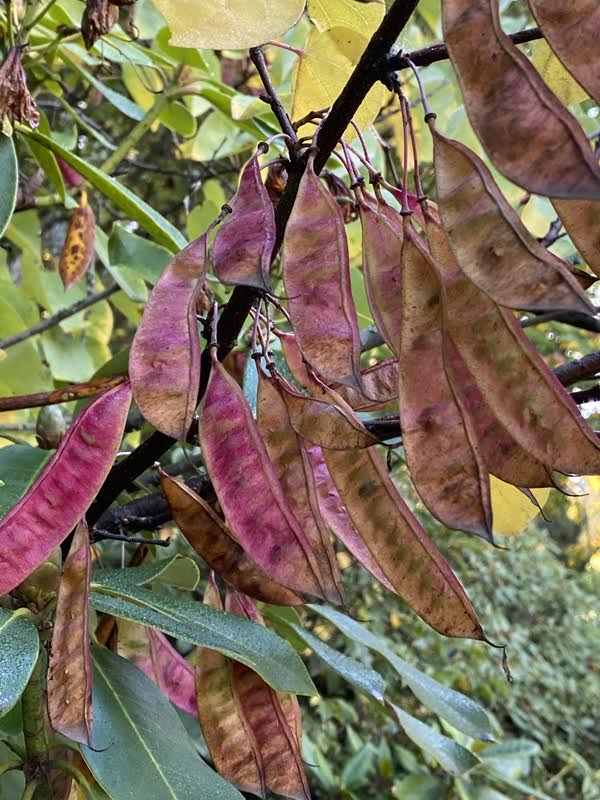
Text and photos VMG Nina S.